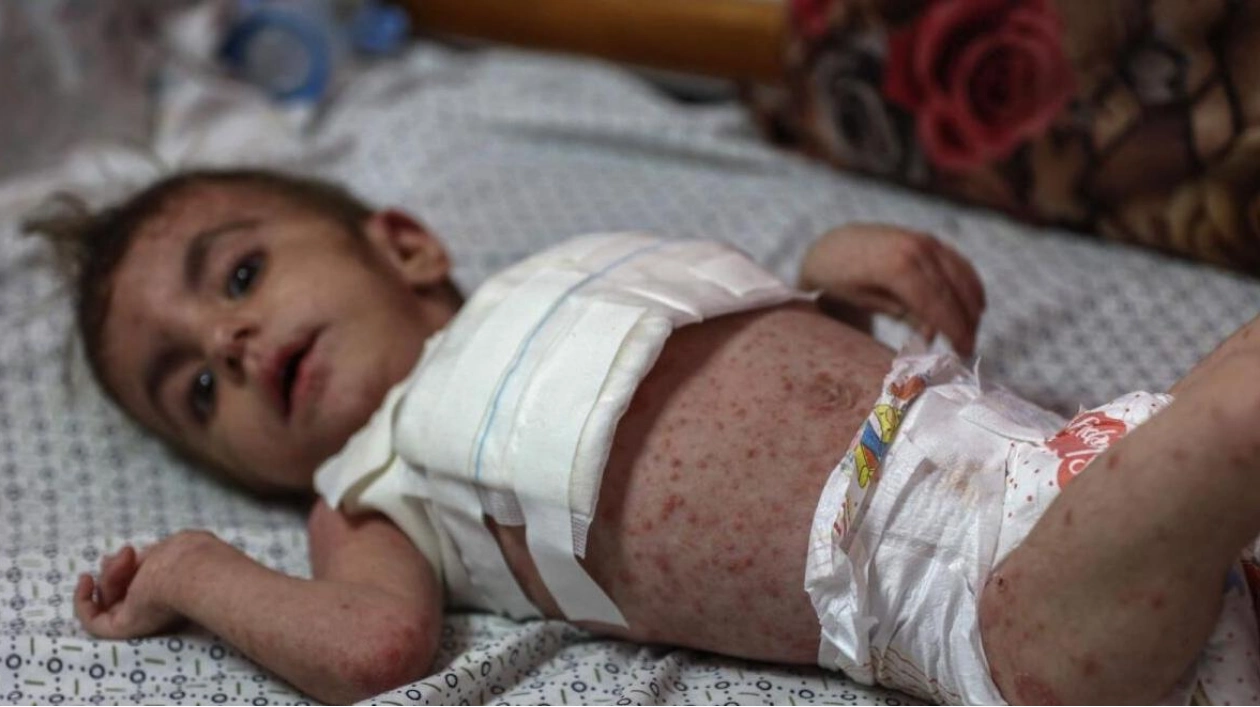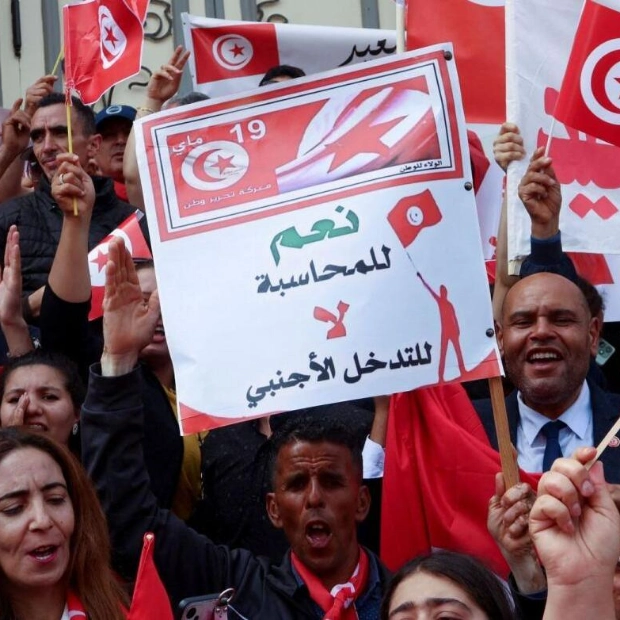Wafaa Elwan's five-year-old son struggles to sleep in the tent city of Gaza where she and her seven children are sheltered, but it's not the sounds of warfare that haunt his nights.
"My son is unable to sleep through the night due to incessant scratching," the worried mother explained. The child exhibits white and red blotches on his feet and legs, and more hidden under his T-shirt. He is among numerous Gazans afflicted with various skin infections, including scabies, chickenpox, lice, impetigo, and other severe rashes.
Over 150,000 individuals in the Palestinian territory have contracted skin diseases due to the dire living conditions forced upon displaced Gazans since the outbreak of the Israel-Hamas conflict on October 7, according to the World Health Organisation.
"We sleep on the ground, on sand infested with worms," Elwan described. Her family is among thousands residing on a sandy plot near the sea, close to the central Gaza city of Deir Al Balah. Elwan feels infections are unavoidable. "We can't bathe our children as we used to. There are no hygiene or sanitary products available for us to clean ourselves or our surroundings. There's nothing."
Parents traditionally encouraged their children to bathe in the Mediterranean, but the pollution resulting from the war's destruction of basic facilities has heightened the risk of disease. "The sea is now a cesspool of sewage. They even dump garbage and baby napkins into it," she lamented.
The WHO has documented 96,417 cases of scabies and lice, 9,274 cases of chickenpox, 60,130 cases of skin rashes, and 10,038 cases of impetigo since the war began. Scabies and chickenpox are particularly prevalent in the coastal Palestinian territory, according to Sami Hamid, a pharmacist operating a temporary clinic in the Deir Al Balah camp.
Two boys at the clinic displayed numerous chickenpox-induced blisters and scabs on their hands, feet, backs, and stomachs. Without adequate medications, Hamid, a 43-year-old displaced himself, applied calamine lotion to alleviate their itching. "Children's skin is suffering from the hot weather and the scarcity of clean water," he noted.
Mohammed Abu Mughaiseeb, the medical coordinator in Gaza for Doctors Without Borders (MSF), highlighted that children are particularly susceptible because "they are children — they play outside, they'll touch anything, eat anything without washing it." Abu Mughaiseeb explained that the hot weather exacerbates sweating and dirt accumulation, leading to rashes and allergies that, if scratched, can result in infections. "People are no longer living in houses; there is no proper hygiene," he stated.
MSF doctors are concerned about the potential emergence of other skin conditions such as leishmaniasis, which can be lethal in its most aggressive form. Gaza's children are already at high risk of disease due to compromised immune systems from malnutrition.
Hamid recounted a recent visit to a temporary school where 24 out of 150 students had scabies. "Some have developed skin infections, and unfortunately, these infections are spreading among them," said Ola Al Qula, a teacher at one of the tent schools.
The WHO has also warned that other diseases are spreading rapidly through the camps due to poor hygiene. "The toilets here are rudimentary, draining into channels among tents, which ultimately contributes to the spread of epidemics," Hamid explained. The WHO reported 485,000 cases of diarrhoea.
The United Nations reported on Tuesday that there are now 1.9 million displaced people in Gaza out of a population of approximately 2.4 million. The conflict began with Hamas's October 7 attack on southern Israel, which resulted in the deaths of 1,195 people, mostly civilians, according to an AFP tally based on Israeli figures. Israel's retaliatory offensive has claimed at least 37,925 lives, also mostly civilians, according to data from the health ministry in Hamas-run Gaza.






